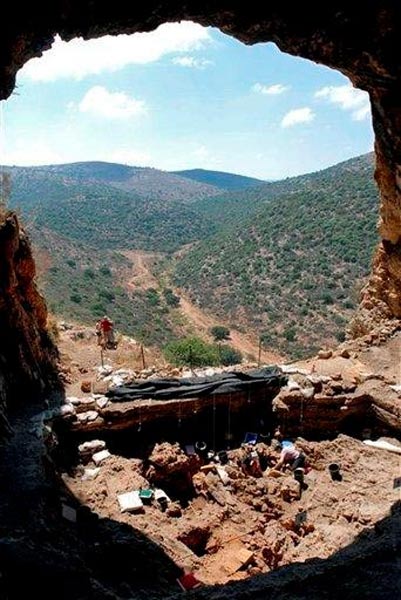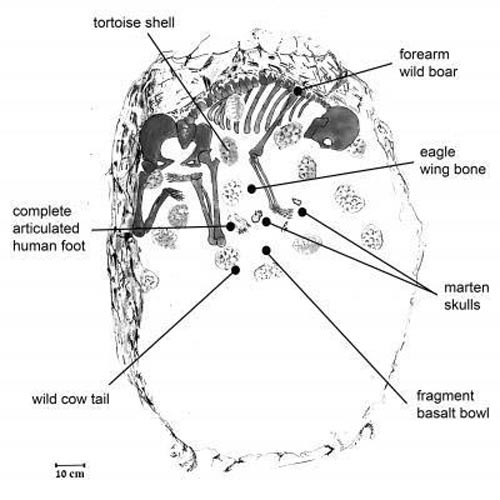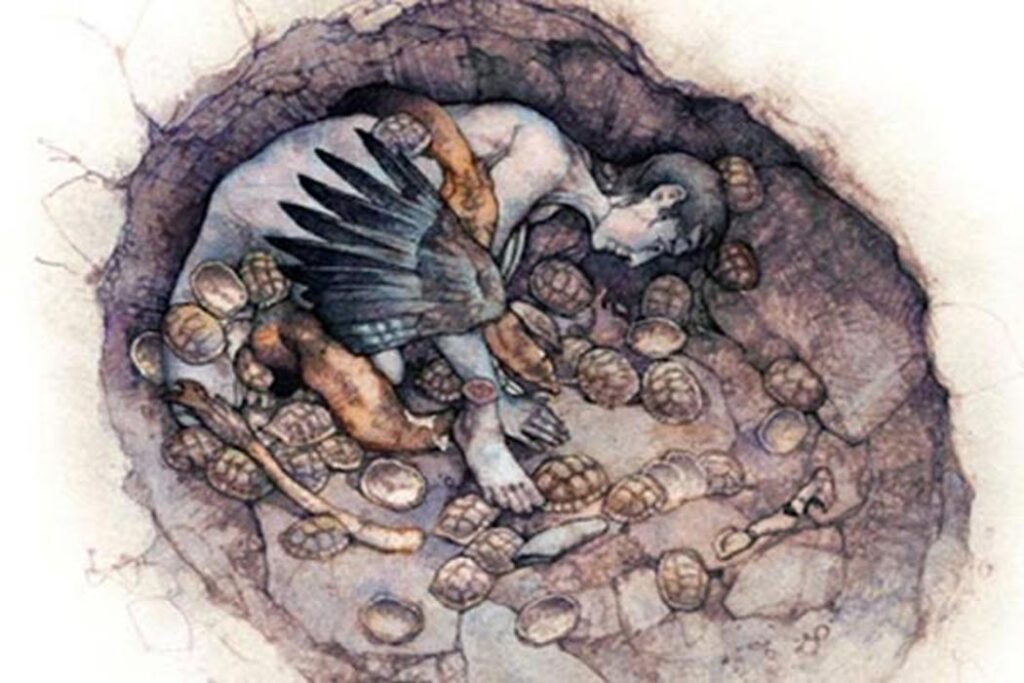The archaeological excavations at the Hilazon Tachtit Cave site in northern Israel have unearthed a remarkable treasure trove of insights into the intricate funeral rituals of the Natufian people, who lived over 12,000 years ago. This rare glimpse into the beliefs, social structures, and ritual practices of a pivotal transitional period in human history provides an invaluable opportunity to better understand the complexities of our ancestral past.
The discovery of an exceptionally well-preserved grave, containing the remains of a 1.5-meter-tall woman accompanied by a vast array of carefully selected and placed objects, has captivated the attention of archaeologists and historians alike. Through meticulous reconstruction and analysis, researchers have been able to piece together the sequence of events that unfolded during this extraordinary funeral ritual, shedding light on the profound significance it held for the Natufian community.
In this blog post, we will delve into the remarkable findings from the Hilazon Tachtit Cave site, explore the significance of this funerary event, and gain a deeper appreciation for the social and ritual complexities of the Natufian people as they transitioned towards an agricultural lifestyle.
Uncovering an Extraordinary Burial

In 2008, a team of archaeologists from the Hebrew University of Jerusalem made a remarkable discovery in the Hilazon Tachtit Cave, located along the bank of the Hilazon River in western Galilee. Excavating the cave floor, they uncovered a well-preserved grave measuring approximately 0.70 m x 1.00 m x 0.45 m, containing the remains of a 1.5-meter-tall woman.
The body was laid on a bed of specially curated materials, including gazelle horn cores, fragments of chalk, fresh clay, limestone blocks, and sediment. Remarkably, 86 tortoise shells were positioned under and around the woman’s body, along with a variety of other items, such as sea shells, an eagle’s wing, a leopard’s pelvis, a wild boar’s forearm, and even a human foot. Atop the body, a large stone was placed to seal the burial space, indicating the profound significance of this funerary ritual.
The sheer number and diversity of the objects found within the grave suggest that this was no ordinary burial. The careful selection and placement of these items point to a meticulously planned and executed ritual, one that held deep meaning for the Natufian community.
Reconstructing the Ritual Sequence

Eight years after the initial discovery, researchers from the Hebrew University of Jerusalem and the University of Connecticut have painstakingly reconstructed the sequence of events that unfolded during this extraordinary funeral ritual.
The process began with the excavation of an oval grave pit in the cave floor. A layer of objects, including seashells, a broken basalt palette, red ochre, chalk, and several complete tortoise shells, was then carefully placed between large stones. This was followed by a layer of sediment containing ashes and flint and animal bone debris.
Approximately halfway through the ritual, the woman’s body was laid inside the pit in a child-bearing position, and additional special items, including more tortoise shells, were placed on top of and around her. The grave was then filled with another layer of sediment and limestone blocks of various sizes, directly on top of the body. Finally, the ritual concluded with the sealing of the grave by a large, heavy stone.
The researchers emphasize the significant pre-planning and community engagement involved in this funerary event. The collection of materials required for the grave construction, as well as the capture and preparation of the 86 tortoises, must have been a time-consuming and coordinated effort, requiring the involvement of multiple members of the Natufian community.
The Significance of the Ritual

The elaborate burial ritual discovered at the Hilazon Tachtit Cave site provides a rare and invaluable glimpse into the social complexity and ritual practices of the Natufian people, a crucial transitional period in human history as they moved towards an agricultural lifestyle.
The researchers note that the “remnants of a ritual event at this site provide a rare opportunity to reconstruct the dynamics of ritual performance at a time when funerary ritual was becoming an increasingly important social mediator.” The significant pre-planning and community involvement implied by the ritual sequence suggest that this funerary event held profound significance for the Natufian people.
Professor Leore Grosman from the Hebrew University of Jerusalem explains that the “significant pre-planning implies that there was a defined ‘to do’ list, and a working plan of ritual actions and their order.” This level of organization and attention to detail points to the importance of this ritual within the Natufian social and religious framework.
Furthermore, the careful selection and placement of the objects within the grave, including the 86 tortoise shells, the eagle’s wing, the leopard’s pelvis, and the human foot, suggest that these items held deep symbolic meaning for the Natufian people. The researchers believe that these objects were deliberately chosen to represent the woman’s status, spiritual beliefs, or connection to the natural world.
The sheer scale and complexity of this funerary ritual highlight the social and ritual sophistication of the Natufian people, challenging the traditional view of them as simple hunter-gatherers. The evidence suggests that they had developed a rich and nuanced understanding of the spiritual and social significance of death and burial, which played a crucial role in their transitional period towards early agriculture.
The Importance of Archaeological Research

The remarkable discoveries at the Hilazon Tachtit Cave site not only expand our understanding of the Natufian culture but also underscore the vital importance of archaeological research in unveiling the complex social and ritual dimensions of our ancestral past.
Through meticulous excavation, analysis, and reconstruction, the researchers have been able to piece together a detailed and compelling narrative of the Natufian people’s beliefs, practices, and social structures. This rare glimpse into a pivotal moment in human history provides invaluable insights that can help us better understand the evolutionary trajectory of our species and the profound role that ritual and spirituality have played in shaping our collective past.
As we continue to uncover and study the archaeological remnants of ancient civilizations, we are constantly reminded of the richness and complexity of the human experience. The Hilazon Tachtit Cave site is a testament to the power of archaeological research to expand our understanding of the past and to challenge our preconceptions about the development of human societies.
Conclusion
The elaborate burial ritual discovered at the Hilazon Tachtit Cave site in northern Israel offers a remarkable window into the beliefs, social structures, and ritual practices of the Natufian people over 12,000 years ago. The meticulous reconstruction of the ritual sequence, the careful selection and placement of objects, and the evident community involvement all point to the profound significance of this funerary event for this pivotal period in human history.
This discovery not only expands our understanding of the Natufian culture but also highlights the important role that archaeological research can play in unveiling the complex social and ritual dimensions of our ancestral past. As we continue to explore and uncover the remnants of ancient civilizations, we are constantly reminded of the richness and complexity of the human experience, and the vital importance of preserving and studying these invaluable insights into our shared history.
